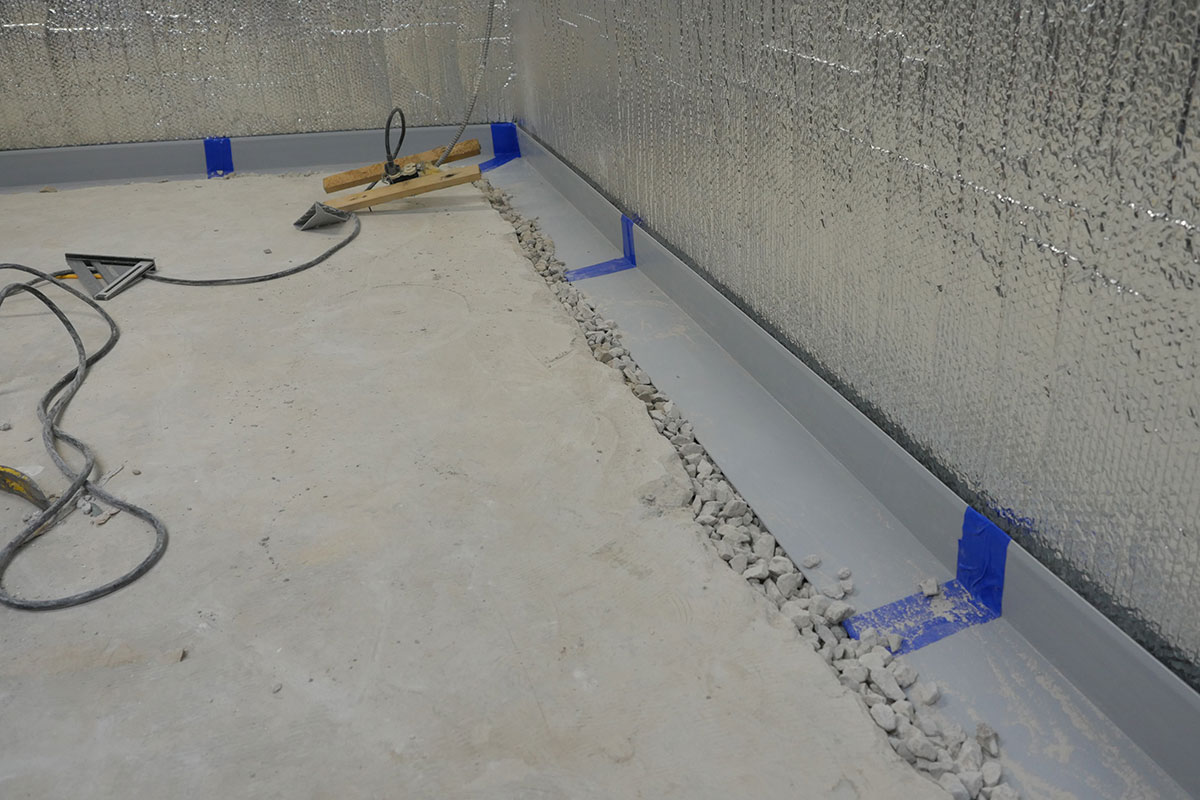A drain tile system is a waterproofing system intended to prevent water from pooling around your home foundation. It is a simple and ingenious way to protect your home from harmful basement flooding. Most homes, even significantly older ones, have a drain tile system installed already from when they were constructed. In most situations, it’s illegal to not have it.
Drain tile sits beneath the foundation of a home on the interior or exterior. It collects water from soil and redirects it either by gravity or electronically through a sump pump to a storm sewer system or safely away from the home. Whether installed on the exterior or interior, drain tile performs the same job, but we’ll explain later on in the post why we think interior drain tile is better.
Why Do Homes Still Flood So Often?
If every house is legally required to have drain tile and drain tile is supposed to protect basements from flooding, then why do we see so many flooded basements? Excellent question. You see, the methods and materials used to install drain tile systems have changed pretty dramatically over the years.
And even though plastic drain tile piping has been around for decades, that doesn’t mean that it was always used. We find many homes that experience flooding issues have clay drain tile. Clay drain tiles only last half as long as plastic ones under the right conditions. And it’s even more expensive than plastic to install. Furthermore, they’re susceptible to clogging and cracking.
The problem with older systems with clay drain tile is that they often become damaged, clogged, or ineffective. There are many factors that cause issues on drain tile: heavy rains, freeze and thaw cycles, and growing tree roots all cause soil to shift. This shifting either causes soil to enter the drain tile, or damages the drain tile, rendering it less effective at protecting your home from basement flooding.
Because of these reasons, outdated clay drain tile is often a contributor to home flooding.
How Do I Know If My Drain Tile Needs to Be Replaced?
Keep a look out for signs of moisture entering your basement. Efflorescence, mould or mildew, condensation on windows or pipes, water stains, and foundation cracks are all signs of moisture issues. If unsure, it’s best to get a free assessment by one of our Basement Solutions Experts. Chances are if you are experiencing symptoms of moisture, the drain tile in your home may be compromised.
If your drain tile needs to be replaced, it is best to replace the whole system. A system that has broken in one area will inevitably break in another. As well, drain tile systems are meant to last decades before needing to be replaced. It is best to give your waterproofing system a fresh start.
But these days, the technology, materials, and methodologies of waterproofing systems have come a long way. Here’s our process when installing a new waterproofing system. It involves a combination of drain tile with other innovative products meant to prolong the life of the system and protect your home from flooding, harmful radon gasses, and even look supremely pleasing.
The Supreme Drain Tile System
There are two different ways to install drain tile: on the exterior or in the interior of the home. Both really perform the same job. The main difference is in how it is installed. Exterior drain tile installations involve a lot of work in excavating the ground around the home foundation to install it. At Supreme Basements, we opt for the less intrusive and less expensive interior installations. Our customers appreciate it too.
It starts with protecting your belongings by covering them with tarps and plastic. If the basement is finished, a demolition must be performed, removing drywall and floor boards/tile/carpet where necessary. The old drain tile system is dug out and a trench jack hammered around the perimeter of the basement to make room for the new system.
From there, depending on which solution best suits the situation, either perforated PVC piping or flexible corrugated plastic piping is laid and connected in the trench and then connected to the sump pump pit. Gravel stone is layered on top of the piping, which acts as a filter for water to flow through into the pipe.
SafeBasements SafeDrain™ System
This is where the Supreme touch comes in. We are a certified dealer with SafeBasements, a leader in basement waterproofing technology. The SafeBasements SafeDrain™ system is installed on top of the gravel. The SafeDrain™ System features rubber seals which allow water to pass through, but prevents harmful radon gasses (gasses from soil) from entering the home.
Its intuitive design allows for a 100% thicker layer of concrete to be placed over the area, without compromising the flow rate of the of draining water. This added strength at the repaired area is substantial and aids in maintaining a permanent repair without common failure rates in a thin layer of concrete. Once we started using it, we couldn’t go back. A system with SafeDrain™ is incomparably higher quality than one without.
The Supreme Difference
Our dedication to using the most up-to-date predicts, methods, and services, enables us to give the best warranties in the industry and flexible financing options to our customers.
We offer only the best advice, solutions, and products to our customers, because we treat every home like our own. If you want to speak to an expert about more details, we encourage you to chat with us. Contact us or call us at (519) 946-0363.

